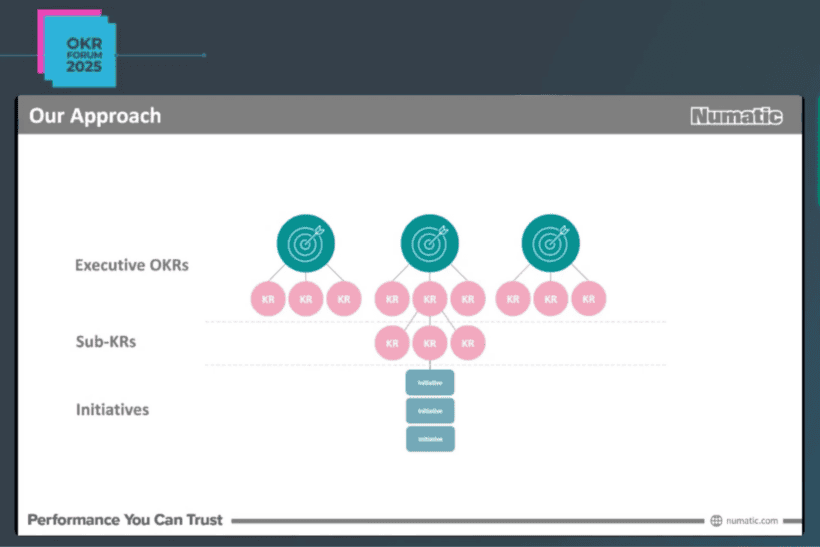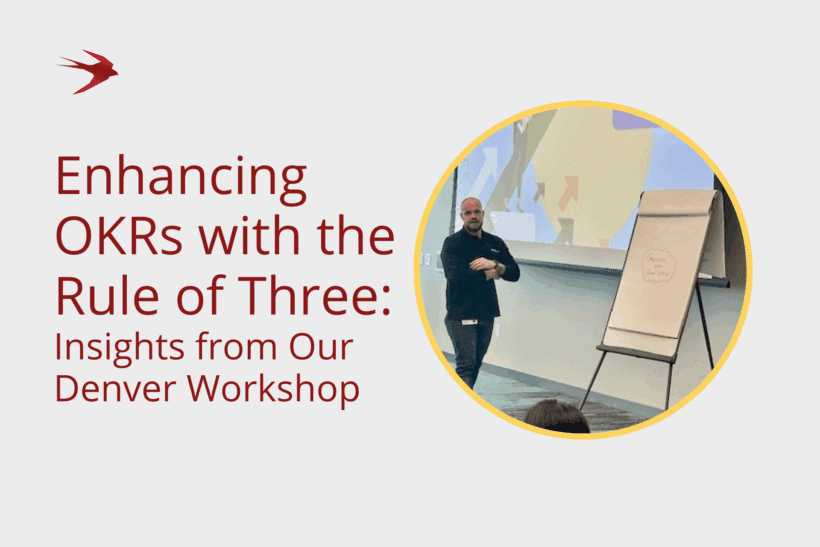The 2025 edition of the OKR Forum, organised by Computer Futures in partnership with OKR mentors, was designed around the theme of “Elevating Strategic Execution”. Earlier this month, our very own Aaron McKenna had the privilege of speaking at the prestigious event alongside Simon Barry from Numatic International. The session focused on a critical challenge many organisations face: how to move beyond setting OKRs to truly embedding them into the way work gets done.
Numatic International, known for their iconic Henry vacuum cleaners, have been on an exciting journey to leverage OKRs for long-term growth, sustainability, and operational excellence. Like many organisations, they set ambitious goals when introducing OKRs—but what really stood out was their commitment to making OKRs more than just a management framework. Instead of treating them as aspirational targets that sit in a slide deck, they integrated them into daily decision-making and company culture.
In fact, the work that we did at Numatic was a runner up for an OKR Award in the new implementation category. Curious to hear more? Watch the full talk below and read the full OKR consultancy & implementation case study too.
The Big Takeaway: OKRs Should Be a Living, Breathing System
Our discussion centered on a crucial mindset shift: OKRs shouldn’t just be a goal-setting exercise. They should become a dynamic, continuously evolving system that informs strategic decisions, aligns teams, and drives meaningful action.
So how do you get there? Here are three key takeaways from our session that might help if you’re working with OKRs—or thinking about introducing them in your organisation.
1. Strategic Clarity Comes First
Before OKRs can drive real impact, leadership needs to align on a clear vision. Numatic spent time defining their North Stars—long-term strategic goals—that gave their OKRs direction and ensured they were rooted in broader business priorities.
A common mistake companies make is jumping straight into drafting OKRs without first establishing clarity on where they want to go. If your leadership team hasn’t yet aligned on a strategic direction, that’s where you should start.
Try our AI-powered strategy and OKR assessment tool to self-assess your strategy and OKR maturity.
2. Execution Beats Perfection
One of the biggest pitfalls we see? Organisations spending months crafting the “perfect” OKRs—only for them to sit untouched.
Numatic tackled this by embedding OKRs into their leadership rhythm. Rather than treating them as a once-a-quarter review exercise, they made OKRs a core part of decision-making, regularly revisiting them in leadership meetings and team discussions. This ensured that OKRs remained relevant and actionable, rather than becoming static documents.
If your organisation struggles with execution, consider shifting the focus from writing perfect OKRs to making them a consistent part of your workflow.
3. Make OKRs Part of the Culture, Not Just a Process
OKRs only work when people at all levels feel connected to them. Numatic’s approach wasn’t just about leadership alignment—it extended to the entire organisation.
They introduced cross-functional squads, executive ownership, and clear accountability structures. This meant that OKRs weren’t just leadership KPIs, but a tool that teams actively used to shape their work and priorities.
For OKRs to truly take root, they need to be more than just a set of goals—they should be a shared language for focus, alignment, and impact.
What This Means for You
Setting OKRs is the easy part. The real challenge is making them stick—turning them from a goal-setting exercise into a system that drives meaningful progress.
If your organisation struggles with execution, now’s the time to refine your approach.
Get in touch today to learn how we can help to take your OKR execution to the next level.


